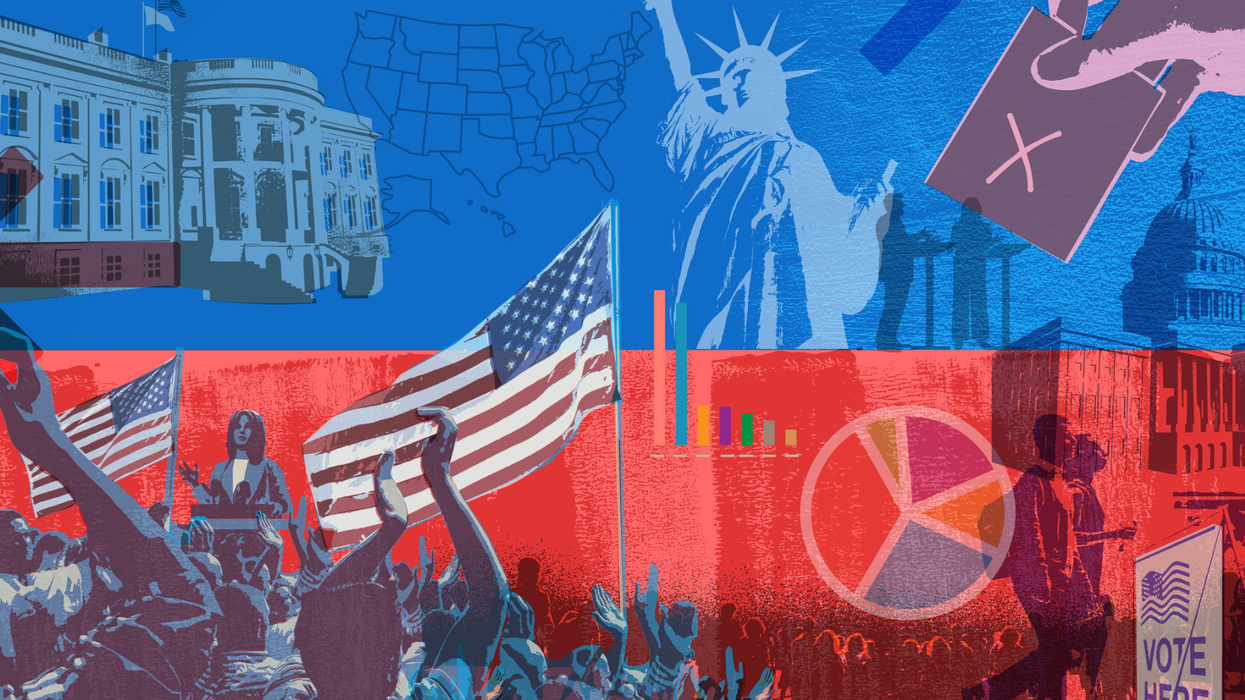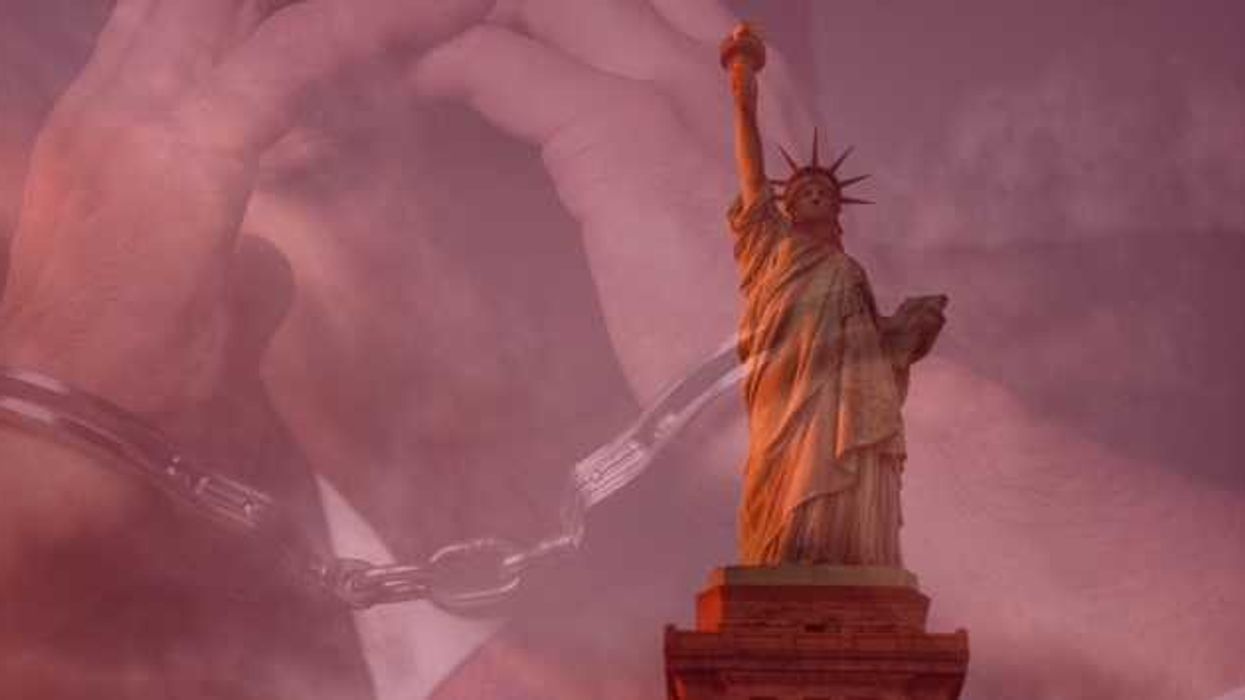This is the 11th installment of an ongoing Q&A series.
As Democrats take power in Washington, if only tenuously, many democracy reform groups see a potential path toward making the American political system work better. In this installment, Bob LaRocca, executive director of the Voter Protection Corps, answers our questions about 2020 accomplishments and plans for the year ahead. His organization uses data-driven solutions to battle voter suppression and disenfranchisement. LaRocca's responses have been edited for clarity and length.
First, let's briefly recap 2020. What was your biggest triumph last year?
American voters, election officials and election workers achieved a remarkable feat in 2020: holding a presidential election during a once-in-a-century pandemic and still achieving the highest turnout in history. Some states, like New Hampshire and South Carolina, adopted significant voting expansions on a temporary basis to address the challenges Covid-19 presented. Others like Michigan, Pennsylvania and Virginia implemented major permanent advances in voting rights for the first time. The Voter Protection Corps was proud to work with city, state and local officials to help ensure that every legitimate voter was able to register, vote and have their vote counted. The Voter Protection Corps released a national action plan to protect in-person voting, recruited poll workers across the county, and ensured students in New Hampshire had the resources they needed to vote. We also partnered with Carnegie Mellon University to create a data tool to identify counties at risk for voting challenges and the possibility of voter disenfranchisement due to vast poll worker recruitment shortfalls.
And your biggest setback?
Even though we made progress in 2020, we faced constant threats to safely casting a ballot, a commander-in-chief who spread disinformation and encouraged voter suppression at every turn, and an attack on our Capitol by white supremacists trying to overturn the election. And while we did everything in our power to ensure every legitimate voter was able to register, vote and have their vote counted, there is no doubt that these suppressive measures affected the behavior of many voters. Our electoral system was broken long before Trump and his enablers gained power.
What is one learning experience you took from 2020?
It's so important to be patient with the process during an election, and especially on Election Day. Anyone who has volunteered or worked in an election knows how difficult it is to wait for the results, but given the unique circumstances of 2020, this feeling was exacerbated among our staff. We constantly had to remind ourselves, and everyone in our communities: Every vote must be counted and we won't know the winner of the presidential election on election night. That is okay. Many states have antiquated systems of waiting to count mail-in ballots and, as a result, those ballots took a few days to process. It was more critical in 2020 to remind ourselves, our friends and our families to be patient through this process.
Now let's look ahead. What issues will your organization prioritize in 2021?
Even though we made tremendous progress in 2020, election administration in the United States is a patchwork, with differing state laws, thousands of local election jurisdictions nationwide, countless outdated systems and policies, and a history of unequal access that dates back to the founding. We have a long way to go to ensure every eligible voter can register, vote and have their vote counted.
Thankfully, we know how to get there. This year, the Voter Protection Corps will focus our efforts on pushing state and local leaders to implement important reforms outlined in our Democracy Benchmark. The report provides specific recommendations, including:
- Voter registration: Every state must offer same-day registration, ensure online voter registration is accessible and entirely online for all eligible voters, adopt automatic voter registration, relax restrictions on third-party voter registration, allow teenagers to pre-register, and end the racist practice of disenfranchising people with felony convictions.
- Voting in person: Every state must provide access to at least 15 days of early voting with uniform hours that include mornings, nights and weekends; allow voters to vote at any Election Day voter center in their local election jurisdiction rather than requiring voters to use an assigned polling place; abolish or relax discriminatory and unnecessary voter identification requirements; reduce the risk of frivolous and intimidating voter challenges; and minimize law enforcement presence at voting sites.
- Vote by mail: Every state must adopt no-excuse voting by mail, allow voters to request mail ballots online, provide multiple options for returning mail ballots (including by mail, at a dropbox or voting site, and allowing a person the voter trusts to return the ballot for them), provide prepaid postage, ensure all mail ballots received within a week of Election Day are counted as long as they are postmarked by Election Day, prevent local election offices from rejecting mail ballots unnecessarily, and provide voters the opportunity to fix problems that cause their mail ballots to be rejected.
- Election administration capacity: Every state must assume responsibility for ensuring that local election offices have the funding and flexibility they need for adequate capacity during election season. State election offices should also have the funding, infrastructure and mandate to ensure that every eligible voter is able to vote conveniently, and that their votes are counted.
How will Democratic control of the federal government change the ways you work toward your goals?
State and local leaders carry great responsibility for righting many of the wrongs we saw in 2020, and many of the states where reform is needed most continue to be led by forces that oppose increased access. Still, it is also essential that the Biden administration and Congress prioritize voting rights at the federal level. We encourage Congress to quickly pass the For The People Act and the John Lewis Act, among other measures.
What do you think will be your biggest challenge moving forward? And how do you plan to tackle it?
Those responsible for perpetuating disinformation and attempting to overthrow our democracy in the horrific attack at the Capitol — including President Donald Trump and Republican members of Congress — must be held accountable. Policymakers must not use lies about the integrity of our election to justify voter suppression. State legislatures across the country are seeking to curtail voting opportunities that have been proven to expand access to the ballot — such as early and mail-in voting -— and erect other barriers that make it harder for people to vote. The challenges before us are daunting. We must ensure that efforts to advance voting rights don't dissipate as we move away from the election. The Voter Protection Corps will continue to fight any efforts to suppress legitimate votes and use data to support state and local leaders as they continue to ensure that every American has safe, convenient, and equal access to their most fundamental right.
Finish the sentence. In two years, American democracy will ...
be innovative, efficient and inclusive.



















